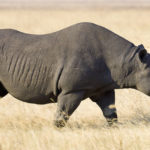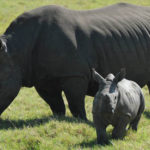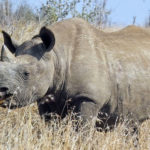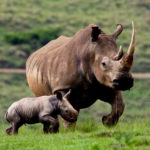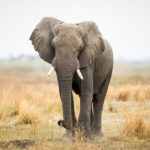Interesting facts about rhinos
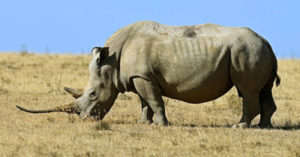 The amazing animals rhinos living in Asia and Africa are threatened by the poachers who hunt them for their horns. Repressed from the habitat of the expanding human civilization, they have been preserved mainly in national parks. Many governments are making efforts to protect them, but, unfortunately, only with mixed success.
The amazing animals rhinos living in Asia and Africa are threatened by the poachers who hunt them for their horns. Repressed from the habitat of the expanding human civilization, they have been preserved mainly in national parks. Many governments are making efforts to protect them, but, unfortunately, only with mixed success.
Once in the expanses of Siberia lived woolly rhinos, similar to their southern relatives, like mammoths on elephants.
Rhinos are the second largest land animals, only smaller than elephants.
In total in the world there are five types of rhinos.
In terms of their chemical composition, rhino horns are closer to human hair and nails than to bones.
Some rhinoceros have two horns. At the same time, some extinct species of these creatures did not have horns at all.
The length of the largest known rhino horn is 158 centimeters.
Hunting of these animals is prohibited in all countries where they are found.
Rhinos have poor eyesight, but they compensate for this lack with excellent hearing and smell.
The rhino has three toes on each leg and a hoof on each toe.
Before starting to mate, rhinos often fight among themselves.
Once in India, fighting rhinos were used along with war elephants.
In total, paleontologists account for 57 extinct genera of rhinos.
About 12 thousand years ago, rhinos walked on the Earth, whose horns reached 2 meters in length.
At short distances, rhinos can reach speeds of up to 60 km / h, crushing everything in their path.
Depending on the species, an adult rhino eats 50-80 kg of plant food daily.
These animals love to wallow in the mud to protect their skin from the scorching rays of the sun. Otherwise they can get sunburn.
Thick rhino skin reaches 6-8 centimeters.
They communicate with each other mainly through smells.
The white rhino is not white in color. Just the name stuck, although the researchers confused similar words of the English language “white” and “wide.” Initially, it meant a “wide-bordered”.
In captivity, these animals breed rather willingly, with the exception of the Sumatran rhinoceros, which because of this is the closest to the extinction border.
The life of rhinos in the wild reaches 35-40 years.
Most of these creatures inhabit the protected reserves of South Africa.
In India, in the 80s of the last century, in order to protect rhinos in Kaziranga National Park from poachers, it was allowed to shoot without warning at any armed person who was not dressed in a uniform of a park employee.
Sumatran rhinos are sometimes called hairy. Their bodies are covered with wool, while the skin of other species of these animals is devoid of vegetation.
From the point of view of biology, the closest relatives of rhinos are tapirs, zebras and horses.
The world’s largest rhinoceros, white, produces 20-22 kg of manure per day.
Pregnancy in female rhinos lasts up to 16 months.
The only natural enemies of rhinos, besides humans, are tigers and lions, but even these predators rarely risk attacking giants armed with horns.
After mating, the male rhino usually leaves, and the process of birth and upbringing of the offspring falls entirely on the female’s shoulders.
September 22 is considered the day of the rhino.
